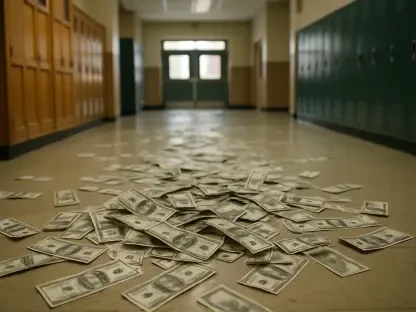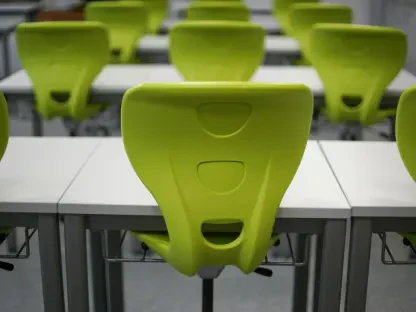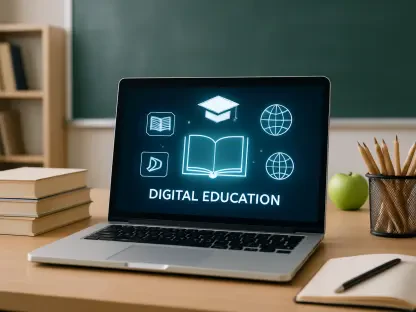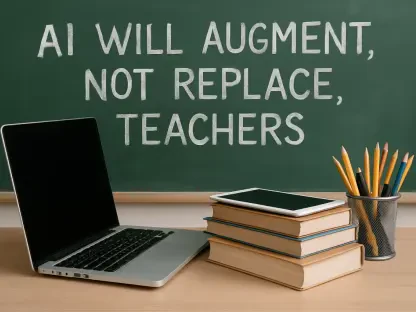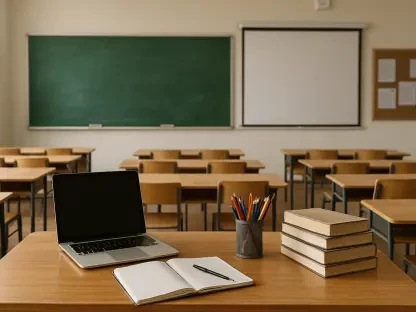The recent passage of a bill by the Iowa House approving a 2% increase in K-12 per-pupil funding, which has now been sent to Governor Kim Reynolds for final approval, has ignited a significant debate about whether this funding increment can truly enhance the quality of education in Iowa. Legislators, educators, and the public are questioning if the additional resources will be sufficient to address current challenges within the education system and help schools progress from merely surviving to thriving.
The Decision Overview
The approved bill proposes an increase of $162 per pupil, bringing the total funding to approximately $7,988 for each student across public schools, charter schools, and private schools through education savings accounts. Initially, the House GOP suggested a 2.25% increase, but a consensus was eventually reached at 2%, including an additional $5 million targeted towards transportation and specific operational needs.
Republican legislators argue that this plan showcases a dedicated effort to maintain a steady and sustainable approach to educational funding. They emphasize that consistent financial support under Republican leadership has been pivotal in fostering student success and ensuring the stability of the education system. This incremental funding strategy is portrayed as a means to achieve gradual and long-term improvements.
On the other hand, Democrats contend that the 2% increase is insufficient to meet the urgent needs of public schools. They argue that the additional funding does little to help Iowa regain its formerly prominent position in national educational rankings. Instead, they believe that current funding levels barely keep schools afloat, leaving them in a survival mode rather than fostering advancement and growth.
Financial Commitment and Allocation
The financial commitments outlined in the bill include an additional $105.9 million allocated to public schools. Senate Republicans expand this figure to a total of $127.8 million, considering contributions from both the state general fund and a reserve fund. The overall commitment comprises nearly $97 million designated for private school students and $14.5 million for charter schools, totaling around $240 million in new K-12 education spending.
A critical component of the bill is the projected cost of education savings accounts, which is expected to rise to approximately $315 million in the upcoming school year, following the removal of income caps for participants. This adjustment underscores a significant financial commitment towards ensuring educational resources across various types of schools.
Impact on Public Schools
Opinions among educators and association leaders regarding the impact of the 2% funding increase are mixed. Joshua Brown, president of the Iowa State Education Association, has expressed concern that the modest funding hike may compromise the quality and breadth of student opportunities. He believes that a 5% increase is necessary to maintain manageable class sizes and enhance teacher recruitment and retention. Brown argues that prioritizing such investments is crucial for the holistic development of students and the overall quality of education.
Critics like Brown emphasize that the substantial investment in private school vouchers, projected to be $1 billion over three years, favors a minority of students while leaving public schools with insufficient resources. This misalignment, he argues, could hamper the majority of Iowa’s students, highlighting the need for a more balanced and equitable distribution of educational funds.
Republican Perspectives
Republican representatives maintain that the 2% increase reflects a prudent and responsible approach to state budgeting, ensuring the long-term sustainability of educational finance. Rep. Dan Gehlbach asserted that the state’s consistent financial support provides stability for public schools and gradually enhances the educational framework. Republican leaders view this steady increment as a step towards sustainable growth in the education sector without imposing an undue burden on the state budget.
The narrative from Republican legislators suggests that their focus is on incremental, stable progress that aligns with broader fiscal management principles. They believe that responsible budgeting will ultimately lead to measurable improvements in the education system over time, ensuring each increment contributes constructively to the overall development of Iowa’s educational landscape.
Democratic Concerns
Democratic voices in the legislature highlight the urgency for more substantial financial support to address the escalating operational costs faced by public schools. Rep. Heather Matson emphasized that the 2% increase falls short of what is necessary to help Iowa reclaim its educational standing. Democrats argue that public education requires significant enhancements rather than minimal adjustments. They believe that without substantial increases in funding, schools will continue to struggle in providing high-quality educational experiences.
Matson and her colleagues point out the pressing needs for improved resources, supporting infrastructure, and enhanced educational programs that can only be achieved through more robust financial investments. They argue that a more aggressive funding approach is essential to move public schools from merely surviving to delivering outstanding educational outcomes.
Looking Forward
The recent approval by the Iowa House of a bill that grants a 2% increase in K-12 per-student funding has sparked considerable debate. This bill, which now awaits Governor Kim Reynolds’ final approval, raises questions about whether this funding increment can genuinely improve the quality of education in Iowa. Lawmakers, educators, and the general public are all expressing concerns about the adequacy of these additional resources. They wonder if this increase is enough to tackle existing challenges within the education system and push schools beyond mere survival to a state of thriving excellence.
Many argue that a 2% increase may not be sufficient given the growing demands and needs within the educational sector. Schools face numerous issues, including outdated facilities, insufficient teaching materials, and rising operational costs. The expectation is that more substantial investments are necessary to address these problems comprehensively.
On the other hand, some believe that any increase is a step in the right direction. This additional funding could help manage class sizes, update technology, and offer more professional development for teachers. However, the primary concern remains: Will this modest increase make a meaningful difference in the long run? As the state waits for Governor Reynolds’ decision, stakeholders continue to discuss the best ways to ensure that Iowa’s educational system meets the needs of all its students.


